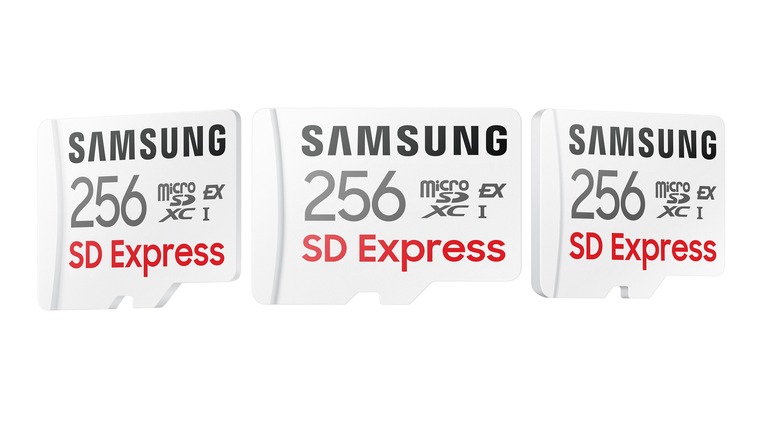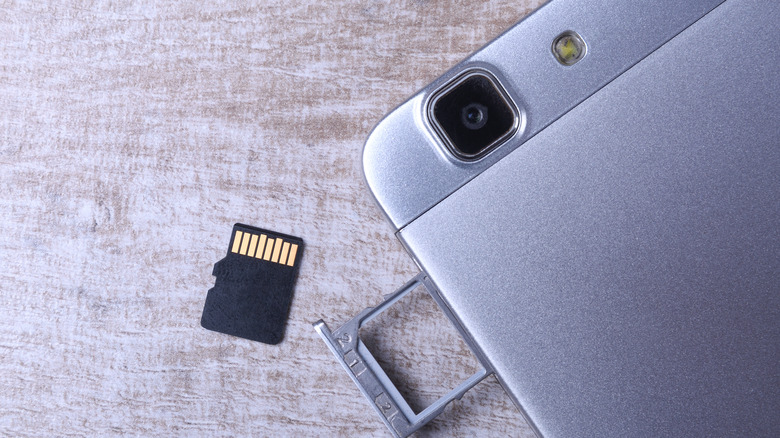What Are microSD Express Cards And Can You Use Them In Your Android Phone?
We may receive a commission on purchases made from links.
SD Express cards were first introduced in 2018 with the new SD 7.0 specification. The cards utilize PCIe and NVMe interfaces that give them a leg up on the previous generation of bus interfaces. Their single-lane PCIe bandwidth can achieve data transfer speeds of 985MB/s, which is significantly faster than traditional UHS-1 at 104MB/s.
However, a MicroSD Express card was missing from the market for years due to thermal and compatibility complications. That all changed when Samsung unveiled an SD Express MicroSD card with a maximum transfer speed of 800 MB/s. This makes it 1.4 times faster than a SATA SSD with a maximum speed of 560 MB/s. Samsung noted that the card can reach these speeds thanks to its Dynamic Thermal Guard (DTG) technology that keeps temperature levels in check.
The card's faster speeds can reduce the time it takes to move large files such as high-definition videos. The new line of Samsung cards is also sizable, with a 256GB storage variant coming later this year. There's also a 1Tb card equipped with V-NAND, expected to be released in the third quarter of next year.
The good news is MicroSD Express cards work with Android phones. The bad news is you won't get the high-level performance promised.
You'd need an SD Express compatible device
MicroSD Express cards require an extra row of pins on the device they are inserted in to reach maximum speeds. Not many Android devices on the market support Express cards, so your phone likely won't benefit from upgrading to one of these cards. However, SD Express cards are backward compatible, meaning they will function in your Android phone, albeit at reduced speeds.
That is assuming, of course, you even have an SD card slot. SD card slots have been phased out of Android phones in recent years. Even Samsung dropped its MicroSD support in its flagship series with the Galaxy S21 back in 2021. What's left are older or midrange Android phones like the Motorola Moto G 5G sporting MicroSD card support.
Now that there is a real MicroSD Express card on the way from Samsung, there is a chance that Android manufacturers will implement the express technology into their devices. But at the moment, there isn't a reason to buy a MicroSD Express card solely for your current Android phone. Considering that the new MicroSD Express cards will likely be considerably more expensive than standard MicroSD cards, it's probably best to wait to see how the industry adapts the technology.

